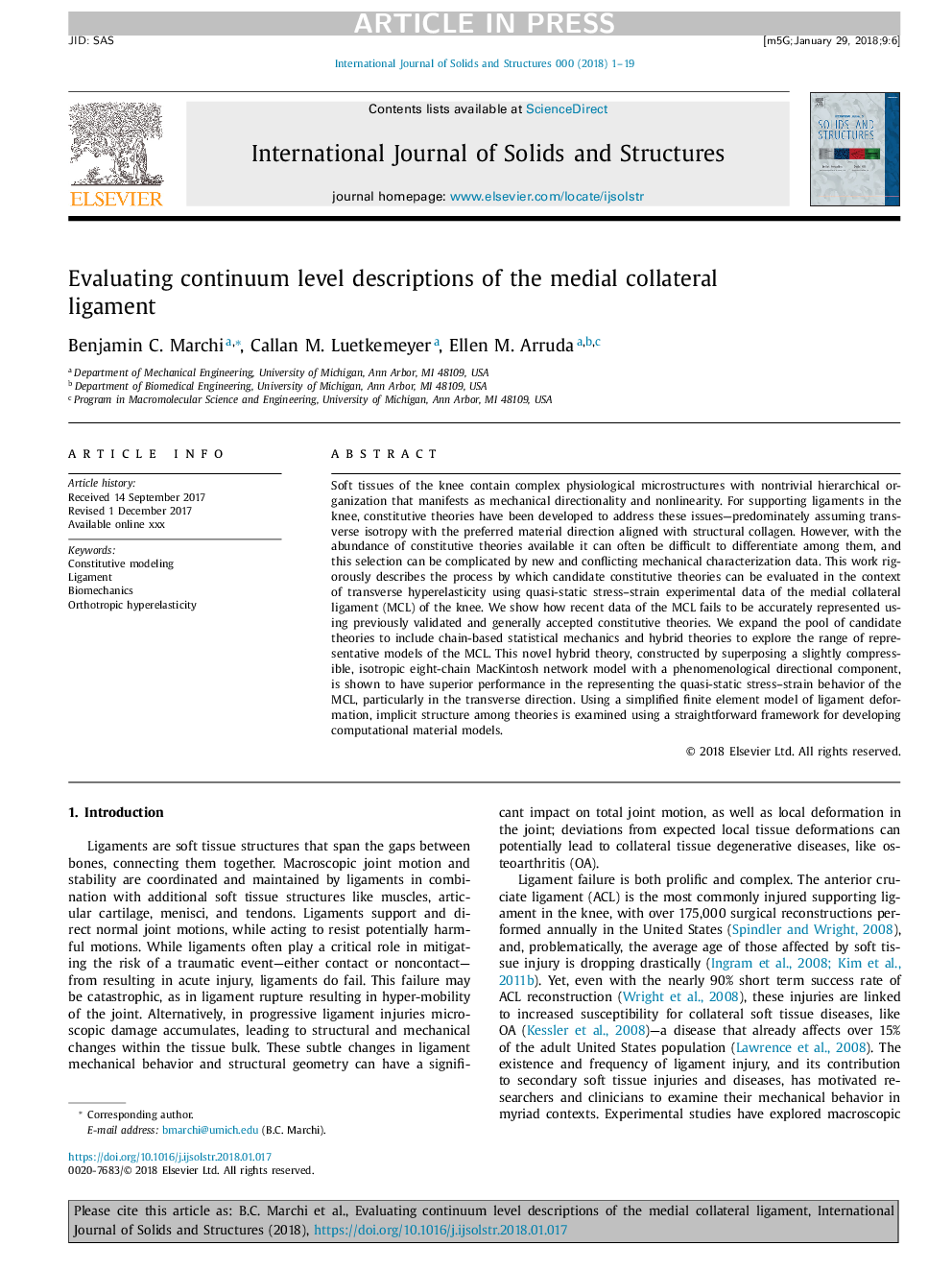| Article ID | Journal | Published Year | Pages | File Type |
|---|---|---|---|---|
| 6748376 | International Journal of Solids and Structures | 2018 | 19 Pages |
Abstract
Soft tissues of the knee contain complex physiological microstructures with nontrivial hierarchical organization that manifests as mechanical directionality and nonlinearity. For supporting ligaments in the knee, constitutive theories have been developed to address these issues-predominately assuming transverse isotropy with the preferred material direction aligned with structural collagen. However, with the abundance of constitutive theories available it can often be difficult to differentiate among them, and this selection can be complicated by new and conflicting mechanical characterization data. This work rigorously describes the process by which candidate constitutive theories can be evaluated in the context of transverse hyperelasticity using quasi-static stress-strain experimental data of the medial collateral ligament (MCL) of the knee. We show how recent data of the MCL fails to be accurately represented using previously validated and generally accepted constitutive theories. We expand the pool of candidate theories to include chain-based statistical mechanics and hybrid theories to explore the range of representative models of the MCL. This novel hybrid theory, constructed by superposing a slightly compressible, isotropic eight-chain MacKintosh network model with a phenomenological directional component, is shown to have superior performance in the representing the quasi-static stress-strain behavior of the MCL, particularly in the transverse direction. Using a simplified finite element model of ligament deformation, implicit structure among theories is examined using a straightforward framework for developing computational material models.
Related Topics
Physical Sciences and Engineering
Engineering
Civil and Structural Engineering
Authors
Benjamin C. Marchi, Callan M. Luetkemeyer, Ellen M. Arruda,
